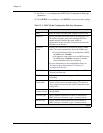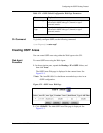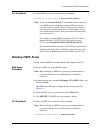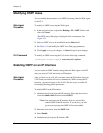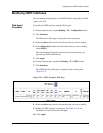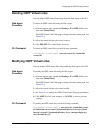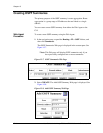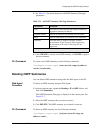
15-12 User Guide for the Avaya P580 and P882 Multiservice Switches, v6.1
Chapter 15
Configuring an OSPF Passive-Interface
You can prevent OSPF from sending routing updates across the network by
using the OSPF passive-interface command. Enabling this command
prevents OSPF from sending hello packets across the network. Any OSPF
hello packets received from other OSPF routers on the network are also
ignored. OSPF advertises the passive-interface as a stub network in the
router updates it sends to other OSPF interfaces.
You can set OSPF passive-interface using either the Web Agent or the CLI.
Web Agent
Procedure
You can set OSPF passive-interface from the OSPF Interface Web page.
The Interface-State field on the OSPF Interface Web page can be set to
Passive, which disables the sending of OSPF routing updates. Normal,
which enables the sending of OSPF routing updates, is the default.
CLI Commands You can set OSPF Passive Interface from the CLI using the following
commands:
■ To define an OSPF interface as passive-interface:
(configure router:ospf)# passive-interface
{<interface-name> | <ip-addr>}
■ To set the state of an OSPF interface that is configured as a passive-
interface to normal:
(configure router:ospf)# no passive-interface
{<interface-name> | <ip-addr>}
Creating OSPF Virtual Links
You can create OSPF Virtual links using either the Web Agent or the CLI.
Web Agent
Procedure
To create a OSPF virtual link using the Web Agent:
1. In the navigation pane, expand the Routing > IP > OSPF folders, and
then click Virtual Links.
The OSPF Virtual Links Web page is displayed in the content pane. See
Figure 15-5.
*Note: The OSPF Web page displays only if OSPF virtual links
were previously configured.



